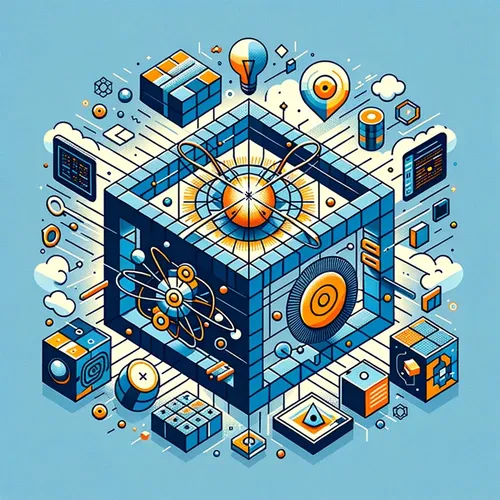Hybrid Quantum-Classical Computing: Bridging Worlds, Merging Opposites | Quantum Computing 101
- Author
- Quiet. Please
- Published
- Mon 28 Jul 2025
- Episode Link
- https://www.spreaker.com/episode/hybrid-quantum-classical-computing-bridging-worlds-merging-opposites-quantum-computing-101--67153496
This is your Quantum Computing 101 podcast.
Picture this: July 24th, 2025—a date quantum technologists have been buzzing about. In just 48 hours, I watched as the headlines emerged: new billion‑dollar bets, flawless quantum links, and the kind of breakthroughs that redefine both possibility and ambition. But today, I want to draw your focus to something that lives at the intersection of practical necessity and visionary potential: hybrid quantum‑classical solutions. I’m Leo, your Learning Enhanced Operator, and this is Quantum Computing 101.
This week’s most electrifying development comes courtesy of a collaboration between Keio and Waseda Universities in Japan. Their research turned heads by presenting a hybrid optimization method that elegantly solves one of quantum computing’s thorniest problems. Let me set the stage: you’ve got a massive, tangled optimization problem—think global supply chains or complex energy grids. Pure quantum machines, like D-Wave’s latest Advantage2 annealer, promise revolutionary speed, but their hardware can’t swallow problems of this scale whole.
The trick? Use the brute force of classical algorithms as a prelude. Before the quantum hardware even hums to life, simulated annealing—a kind of calculated shrinking—prunes the problem down, stripping away noise and narrowing what you send to the quantum machine. Now, when the quantum annealer takes over, it’s dealing with a manageable, well‑shaped puzzle. The result is not just a technical compromise, but a synergy: classical rigor coupled to quantum creativity produces solutions that consistently outperform either approach on its own.
Walking into a hybrid computing facility these days feels like stepping across a threshold between worlds. The server rooms, bright and humming, house lines of classical processors tirelessly prepping data—in the next room, the lights dim and you hear the low hiss of cryogenic cooling as quantum processors, cocooned in gold‑plated isolation chambers, prepare to dance on the edge of physical law. Germany’s Leibniz Supercomputing Centre is a model of this new duality, its rooms split by temperature, magnetism, and philosophy.
This balance—much like deploying ironclad firewalls while transmitting quantum‑secure messages, as demonstrated last week by Eleni Diamanti’s team in France—reminds me of our own need, as humans, to blend logic and imagination. When NVIDA announced its coupling of QPUs and GPUs, it became clear: mastery in this field demands we bridge old and new, tradition and disruption.
As I see it, hybrid quantum-classical computing is less a technical compromise and more a metaphor for our times. We live in an era defined by merging opposites—AI with human intuition, global digital infrastructure rooted in physical communities, quantum possibility woven into classical certainty. If you feel a resonance, so do I.
Thanks for joining me, Leo, on Quantum Computing 101. Got questions, or a topic you want unraveled? Email me any time at [email protected]. Subscribe for more real‑time revolutions in quantum tech—and remember, this has been a Quiet Please Production. For more, check out quiet please dot AI.
For more http://www.quietplease.ai
Get the best deals https://amzn.to/3ODvOta
